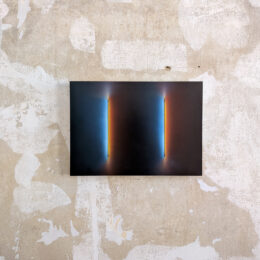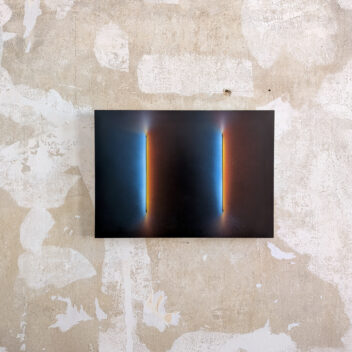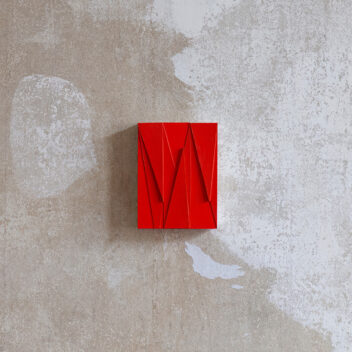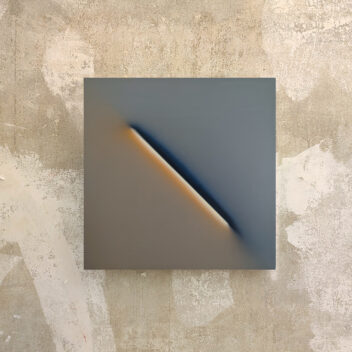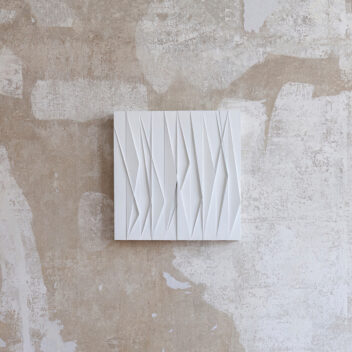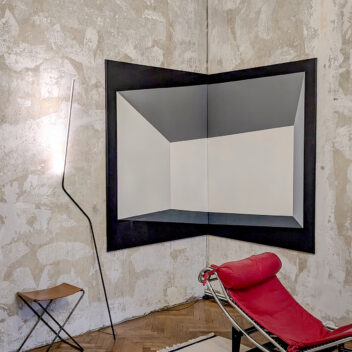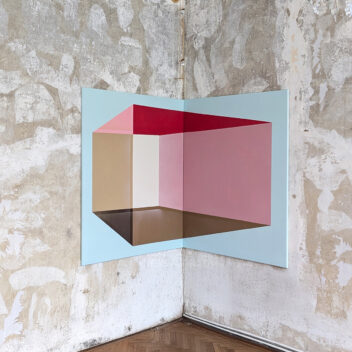Parsa Khalili
Parsa Khalili was born in 1984 in Tehran and grew up in Chicago. The artist and architect currently lives and works in Vienna. In his practice, he understands painting as an alternative medium to systematically investigate space and form and to reflect on their structural relationships.
Read moreSpanning buildings, installation, sculpture, visualization, and painting, his work explores painting as an alternative medium for the investigation of form and space, operating at the intersections and limits of artistic research and architectural design.
Rooted in architectural techniques, his approach generates intricate spatial relationships that shift between perceptions of surface and volume, establishing a delicate imbalance that compels viewers to seek stability and coherence without resolution. Paintings are built through a rigorous process of layering geometric forms, lines, and planes, creating the illusion of depth, movement, and transformation.
The compositions, while at times reductive, invite deeper engagement, revealing complex interactions between form, color, and perspective. Elements transform the paintings based on the viewer’s position and angle, making perception itself an active component of the work. This dynamic relationship underscores Khalili’s fascination with space—not as a passive backdrop, but as an active force within, and external to, the artwork.
Through a disciplined yet exploratory process, Khalili reimagines the act of making space. His work moves fluidly across technical and artistic mediums, from hardline drawings to digital models and computer-generated visualizations. His paintings do not merely depict spatial constructs, they embody them, challenging conventional distinctions between representation and reality. In doing so, he expands the possibilities of architectural thinking within the limits of painting.
Alongside his design practice, Khalili has held teaching positions at Princeton University, the University of Applied Arts in Vienna (die Angewandte), Yale University, and the Pratt Institute.
His work has been honored and supported through international grants and fellowships from institutions such as The Graham Foundation, The A+D Museum, The SOM Foundation, Yale University, and the University of Illinois. His versatile work has been recognized internationally through exhibitions, publications, and design projects in the United States, the United Kingdom, Brazil, Germany, Italy, Austria, and Iran.
